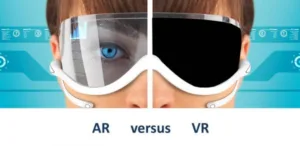Writing about the display industry is sometimes challenging but never boring. There is always something new to write about. Here is my list of the most important trends in the display world as I see them.

LCD vs OLED
Whenever we come to the conclusion that some technology has reached its pinnacle, we are surprised by some new twist of the technology until it really disappears from the market. For the better part of the last decade we were looking at the constant demise of the good old CRT technology and the rise of LCDs. With the same enthusiasm, we are now following the challenge of OLEDs to the LCD market reign. From a macro perspective this topic is certainly high on the list for every longtime observer of the display industry.
On the other hand, it does not really rule the day to day news from the industry players. How many investments for a new OLED fab can you report on? It was a similar issue for LCD once. LCD took the lead in one market segment and the investment decisions were noted as normal business decisions. I would expect that the same will be true for OLED once they own at least one market segment. As some are forecasting, this year will be the year that OLED will take the lead in the smartphone market.
Head Mounted Displays and AR/VR Applications
This is a very sexy topic, with almost no restriction on daily news from a wide variety of players. Unfortunately, everybody knows this and as a consequence, news in this field requires careful reading. Some news is only marginally display-related and a lot is a pure play, trying to catch any attention from the news media.
As a new technology, the AR/VR industry is made up of a lot of start-up companies that are trying to either carve out their market niche or even better get acquired by a big player that needs to find some positive news to please their investors. Within these start-ups are a wide variety of hardware and software developers who have a great, or maybe not so great, idea on how to address this market opportunity.
Anyway, writing about the new stuff is the most fun and the most difficult. Assessing an idea that is not completely developed is a slippery slope. Once you like the idea, it can be difficult to see if it is technologically or socially feasible or not. Who would have thought that people would become nervous about other people wearing a head set with an attached camera? Such a great idea and yet such a product disaster.
So far, the word is out on the adoption of VR as well. The hardware exists but the consumer uptake is not what any of these developers is expecting. Why that is, is an interesting question in itself.
On the other hand, AR and VR are words that are developing into household terms beyond the realm of technology enthusiasts. Most likely we can thank Pokemon Go for that. And while this has nothing to do with head mounted displays per se, if AR is seen as a viable and helpful technology, the use of a head mounted displays may be driven by such applications rather than the hardware driving the adoption of a new software application.
Wide Color Gamut and Color Accuracy
For the last few years, the discussion of a wider color gamut has been driven by the display industry. Now, smartphones with a wider color gamut are giving consumers a way to see the difference. For me, that was always the biggest issue. Besides a theoretical understanding of what a wide color gamut is, how do you show this to the average consumer so that he can decide if this is important to him or not?
I used two iPhones (6S Plus and 7Plus) with the same image using the P3 color gamut in side by side comparison and I was surprised by how much difference there is visible between the two images on the different phones. I believe that the average consumer will easily see that the wider color gamut is actually providing colors to him that the narrower color gamut cannot produce.
Interestingly, some of my family who I showed this to, said that “I like this one better”. Let’s just say that wider is not always better!
UHD and High Dynamic Range
In the large size display realm a lot of discussions are circling around the UHD and high dynamic range topic. Similar to the wide color gamut topic, this topic is focused on the shortcomings of electronic displays versus real life. As a general rule, the human vision system is capable of seeing what our environment is providing to our eyes within the light spectrum sensitivity of our eyes. Electronic displays that provide images similar to the ones we see in our environment should appear more appealing to the consumer.
 Source: NEC
Source: NEC
With cinema looking at adopting UHD / HDR and creating content with these features, the consumer will ultimately have something that makes the latest and greatest TV in his home outshine his older set significantly. This could be the driver of a new replacement cycle for the old TV in our living room, which is, of course, what the CE manufacturers hope for.
So, what is the hottest trend in the display industry today? I think it depends on one’s particular interest and background. Nevertheless, there are several to choose from and I shouldn’t run out of topics for my Display Daily articles any time soon. – NH

